Just a video…
[youtube 0H5g9VS0ENM nolink]
…and a link. Ok, maybe also another link.
@MB: this + Edubuntu + B’s old laptop => test it with the kids!
Ok, this one is for Cgzed and Mzeecedric (CG), my DSLR-affectionados:
Some years ago, I think it was in 2000, I traded in an older Nikon F2 with a 50mm lens into a Nikon F70 – both being single-lens reflex cameras. I went for the Nikon range because a) i wanted to use some older lenses we had acquired in Japan during the 1980s and b) I’d first gone for a Canon model but didnt like its weight. There’s a much better grip on the F70 and with a decent 28-105mm lens, it wasn’t as top-heavy as the Canon.
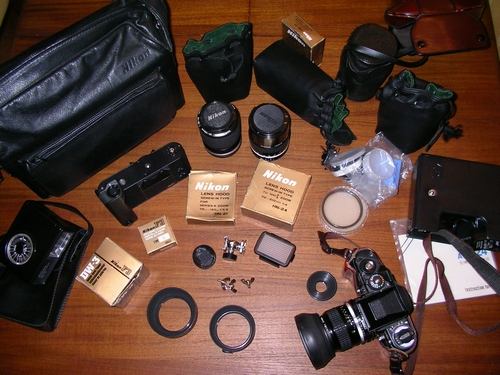
a Nikon F3 with an MD-4 motor-drive, some lenses, filters & bags
Needless to say that my F70 is still almost in mint condition – contrary to Cgzed or CG, I am too lazy for carrying such a huge camera around with me. I guess I’ll keep it for a very very very long time now…
Then came the digital age and my first digital camera was a Casio QV-100 I had managed to obtain for a relatively low price in 1998. Picture wise it came close to what low-budget webcams are capable of doing these days (or even worse) although it came with a CCD chip (instead of a CMOS chip). Battery consumption on this machine was horrible and just one day it went into early retirement. Although I couldnt get it back to life, I had managed to still sell it on eBay. Nice!
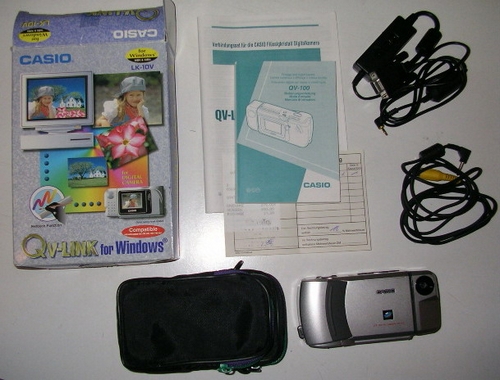
Casio QV-100 with data caboools
Next cam that followed was another low budget solution: Mustek gSmart Mini – which only advantage was the limited size. And you could use it as a webcam, which was pretty cool – back then. This little cam was later on inherited to a member of my extended family.
I think the best part about these cams came when I disassembled them – similar to what this guy did.
Years passed on and nothing happened. Then, during winter 2003, digital cameras started to flood the market. Mama Xmas gave me the hint that I’d have the choice between a bigger bed and a better camera. “You decide what you want, JKE”, she said. “I’ll help you kununua a bigger bed, or you’ll save it and get a camera”. Hmm. A bigged bed? What for? My bed was already 90cm wide and 200cm long – what would I need a bigged bed for? Don’t you know that nerds often sleep alone? …Well, I ended up going for a better camera (and later on inherited a bigger bed from my bro-in-law ;-) => Sanyo Xacti J1, 3Mpx with an internal lens which provides a 2cm macro mode . Awesome!

Sanyo Xacti J1 (not my hand)
The Sanyo J1 is still in use and I’ve often thought about buying a better point&shoot cam, maybe a 7,1*mpx “low-budget” (aka beginners) cam with some more features. Or rather go for a Nikon D40(x)? Of course, Hash will argue that the D50 is a much better deal, but then: unless you have a family and a baby buggy to carry around, there’s no way for me to carry a bulky camera around with me. PLUS: i am way too broke to seriously think about buying just another camera.
There are so many good cameras out there and so many talented photographers. Ok, maybe some of these ppl photoshop their results before uploading them to Flickr & Ipernity, but still: with todays advanced cameras, you basically only require some decent light and the right angle to take a picture. Of course it makes sense to invest into proper equipment, but if you’re as lazy & broke as I am, something like the autofocus 5mpx cam (based on a CMOS sensor) in my Nokia N95 will have to do. Also, it competes with other 3,2mpx cameraphones (N73, SE K800i) and is a real progress to what I had used before, and especially in Kenya: my Nokia 6230(i), which came with a nice & quick CMOS chip. Alas, if you need to take a quick pic without much ado, the Nokia 6230i is still the best cameraphone for that purpose. In fact, it was more fun taking snapshots with my 6230i than it is right now with the N95. But then – I am using the N95 as a real camera substitute, and not for snapshots only.
I’ve now lived with the N95 and its cam for the last 1,2,3….9 months and have taken most of my photos with this cameraphone. Why? Because it’s just around when I need it. Simple.
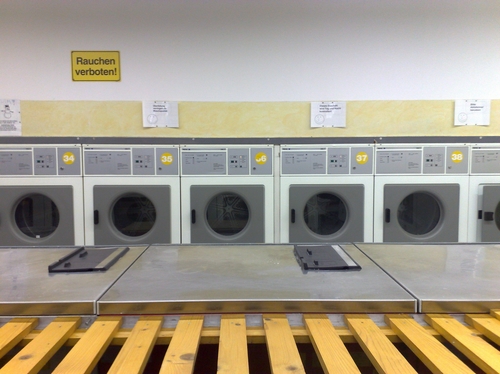
…and this picture is even geotagged!
I am not such a good photographer and so I actually don’t even have to worry about better equipment (as i does NOT depend on the right equipment + i’d be happy if i could get rid of the inherited F3 equipment above which has only been kept due to sentimental reasons + the bad market situation), but my aim right now is to see what’s possible with a relatively bad camera / good cameraphone. What kind of picture quality is this cameraphone capable of?
For a start, check out this Nokia N95 user group on flickr.
*there was this discussion on the net the other day where some camera testers argued the best mpx resolution/chip size was achieved at the 5-7mpx range – can’t find the relevant link though…
Ever wondered what happens to your *waste*?
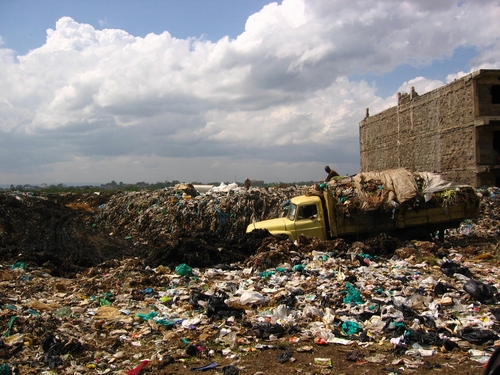
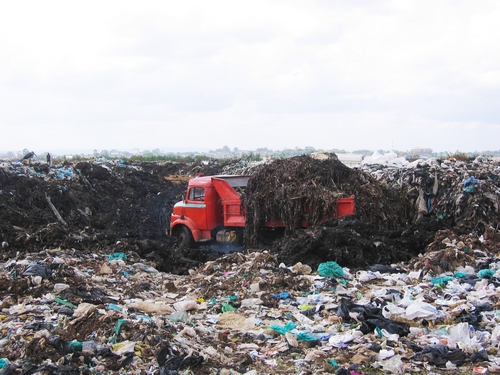
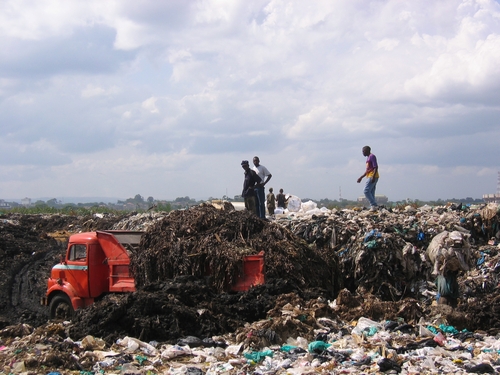

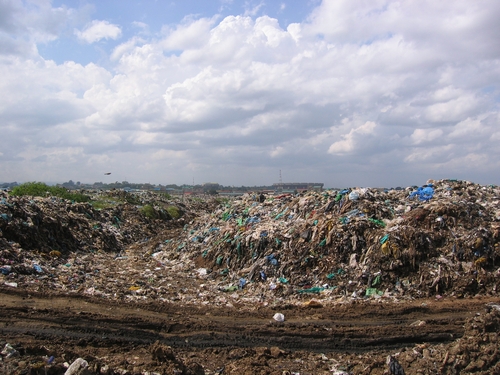
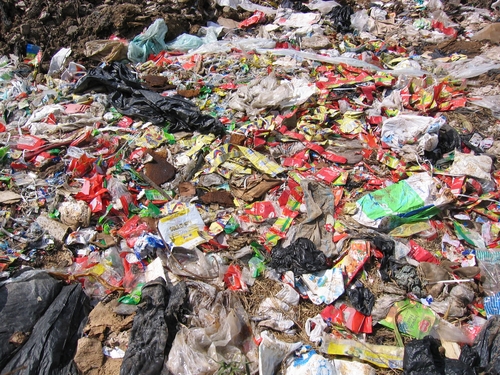
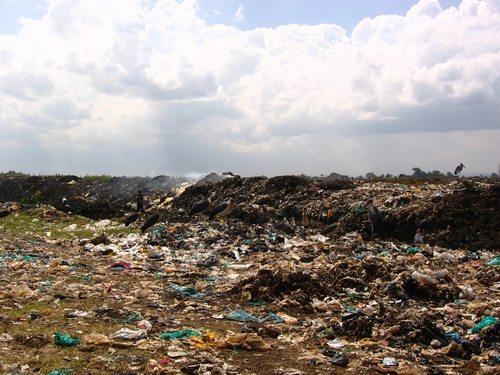
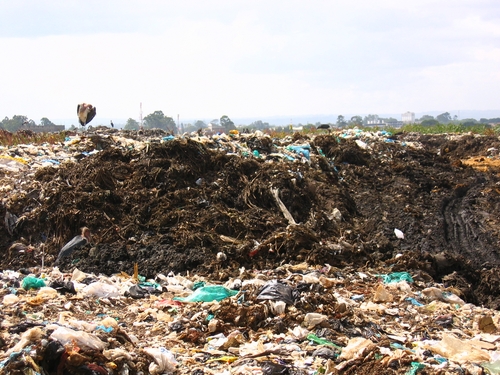
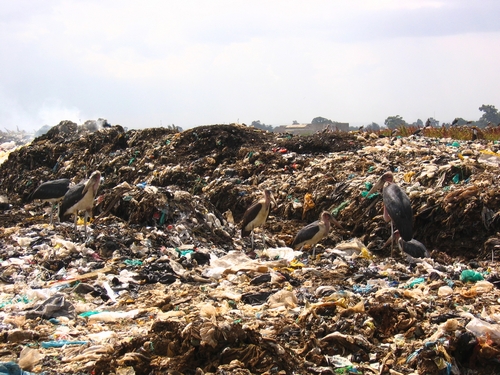
…and that’s just Dandora.
Now, since an agreement to form a great coalition gov. has been found, maybe the Deputy of the Deputy to the Deputy Vice Mheshimiwa will eventually put this on the national agenda.
In reality, those who can afford to worry about the environment just don’t care or have not enough influence, and those who actually have to deal with the waste (even if it secures their income), prefer to dream about multimedia entertainment instead of such burning issues.
Sure, this is just one landfill out of many, out of many places, out of many countries, who just don’t do enough (or anything) on this issue. You’ll find similar landfills in the greatest democracy (sic!) aka USA and even in the UK. But it is one planet.
So why did I blog these pictures here?
Again, governments just provide the legal framework – it’s up to us on how to turn this into a win-win situation for everyone involved.
I’ll start reposting these stories just like EthanZ keeps on repeating his Tripod & activists stories and will only stop once I see some real progress. Pole :-)
All pictures courtesy of MB, February 2007.
We had an interested reader over @ Afrigadget.com writing in the other day, who’s based in Juba, Sudan, and was inquiring about low cost, low tech, low maintenance recycling concepts for *plastic* bottles (PET). At best, I am afraid, we could only tell him about recycling companies already active in East Africa (especially Kenya) and direct him to the CD3WD, compiled by Alex Weir.
Now, when I moved back to Germany last year, some readers asked me to blog about what this place is all about. While I think a generalization isn’t possible, some interesting details or even local *peculiarities* may become visible while reading between the lines – or just by going shopping. In fact, I’ve just come home from the weekly food-organizing-tour at our local supermarket here and was reminded of this special PET-deposit system I’d like to tell you about. Call it bridge blogging, if you will:
From what I’ve read on Wikipedia, some Scandinavian countries are said to have started this deposit system in the first place, with Germany introducing it during the early 1980s as well. What I am talking about is a “container deposit legislation”, or Einwegpfand as we call it in German.

aluminium cans, glass and PET bottles – did you know that these alu cans consist of two different aluminium qualities? recycling them downcycles them to the lower quality….
Here in Germany, this was only valid for glass bottles and special high-density plastic bottles that could be cleaned and reused. Then in 2003, they changed this legalisation to apply to a much bigger range of bottles. Even simple (= thin) PET bottles and – most importantly – cans made of aluminium are now subject to a deposit. So while shopping for my favourite beer brand aka the cheapest available beer in Germany (0,29 EUR / 0,5l :-), I do pay an extra charge of 0,25 EUR which I am then refunded while returning the empty bottle/can using this machine:
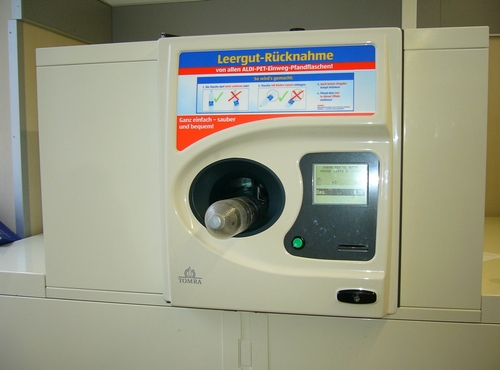
A reverse vending machine, made by the Norwegian company TOMRA. Such machines are installed in most supermarkets in Germany these days… (more)
The interesting part about this system is that most Germans are in fact good at collecting and sorting *waste* and then returning the containers to any supermarket. And while some ppl still claim the lack of decent data on this, the system obviously works. It’s also lots of fun putting these empty bottles in the slot where they are then analyzed (a barcode scanner checks for the UPC code), sorted (alu & plastics) and imediately crushed and compacted.
According to McDonough/Braungart, there’s “no such thing as waste” in an ideal world, but these systems just help to preserve the environment a bit and provide raw material for further recycling – but not upcycling! Still, better than nothing.
Now let’s hope that someone at NEMA will come up with a proposal to introduce a deposit on batteries in Kenya. 2 bob on each battery sold could maybe be enough incentive to make ppl fetch their old batteries from the taka taka pile on their shamba and return them. There may not be a 100% closing-the-loop concept on batteries or other nasty products so far, but it would at least help preserving the environment. All it takes is the right political framerwork, any maybe also some initial funding for the clean-up phase for older batteries that were sold without a deposit. A low charge as a deposit may be better than the long-term environmental damage these batteries create.
I believe that if you can’t change people and their behaviour, give them the right products and/or a financial incentive to contribute to this process. Same applies to public toilets btw but that’s another story.
Why? Because it took this legalisation for people to return their plastic bottles and aluminium bottles which in the past were only collected, burnt and deposited on a landfill. Many customers of course were upset at this extra work, but then – due to their assiduous German nature :-) – just accepted it and turned it into a success.
What’s eyeOS?
EyeOS is virtual desktop / operating system accessible through a browser. Or as they describe it on their website:
eyeOS is a new kind of Operating System, where everything resides on a web browser. With eyeOS, you will have your desktop, applications and files always with you, from your home, your college, your office or your neightboor’s house. Just open a web browser, connect to your eyeOS System and access your personal desktop and all your stuff just like you left it last time.
[youtube Zt35LLcMlcM nolink]
So I’ve downloaded their latest release and installed it on my webspace. Note: I am still on 1&1 (1und1.de / 1and1.com) due to historic reasons (urgently need to switch to a cheaper host though – any recommendations that really work & are reliable? Uptime on 1&1 has been great in the past but they are just crazy about mySQL dbs and other extras. Automatization / user admin panel is still very nice on their system so any other cheaper service would need to offer a good admin panel as well. thx!) and eyeOS requires php 5 in order to run. 1&1 offers both php 4 and 5, but 4 is the default setting. In order to use php 5 on your 1&1 server, you’ll need to rename all files from .php to .php5 and likewise all links / references / calls to other php files within the install.php & index.php. Did that and it just works fine:
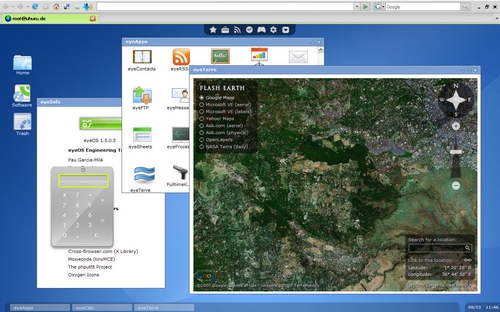
You can test it for yourself on eyeOS.info and I recommend to set your browser to fullscreen view (F11?) in order to fully enjoy the desktop.
So WHY is this interesting?
Imho, eyeOS is a very interesting alternative to….to what? To a virtual machine in the network via VMWARE or a remote VNC connection? Maybe. I think it rather indicates that the future is all about “being connected” = networked computers and that data will then be stored on a main server somewhere, accessible from anywhere in the world. Storing devices such as CDs, DVDs, USB flash disk are the best indicator to see how everything quickly changes from long-time archives to fast-and-forget memory. Following this line of thinking, the question of illegal downloades could one day just be solved as all multimedia files could remain on a central repository and usage (you dont need to physically”posses” data on your hard drive – you just want to use it, right?) would be paid for. Sure there would be ways to crack or bypass that but that’s just another question.
As for now, as broadband / fast inet connection isn’t available everywhere in the world, I tend to regard this only from a local area network perspective. Has this already been implemented at a local university? => Skunkworks Kenya / Kenyatta University?
I like eyeOS because it doesn’t require much to work. It’s simple, it’s efficient, it wins.
There’s this friend of mine with whom I was schooling until Abitur (~ A-levels). I know him since 18 years now and it’s a pleasure meeting him all the time – we currently work at the same company, his office is just one floor above mine.
He’s married with two lovely kids now and has already been working abroad for 5 years for an international organization.
There’s this age difference of 3 years between us and although he always used to be the youngest in our class, the age difference never mattered.
Today he told me he feels like being 40 years old whereas I feel like being something like 26 or so.
The truth is somewhere there in the middle.
How many African twitterdudes & -dudettes are there on Twitter?
Am asking because of my friends on facebook who feel like being spammed with “JKE is twittering:…” messages on their feed pages. I’ve received at least two “what is this twittering business”-questions so far and then try to explain it.
Funny thing is I only started updating my (bilingual) twitter status on a regular basis when I managed to set it up on my Nokia N95 (via fring, twibble and via ordinary sms). Needless to say that it only really makes sense if you have a smartphone with multitasking functionality to have it running in the background, connected to a network (if you’re using your phone to twitter) or don’t mind receiving status updates via sms all the time (which obviously quickly drains the battery and is just stupid).
As for desktop applications, I’ve started using twhirl and quite like it. Twhirl requires an installation of Adobe Air, but once it’s set up, this litte app is just sweet.
So who’s on twitter of you gals & guys (except for the usual suspects :-)?
EDIT: just when I posted this, the following video went public:
[youtube ddO9idmax0o]
Ich hab nen neuen Gemüseschäler und der schneidet so großzügig ab, dass ich eben die Resthitze der Pfanne dazu benutzt habe, um Längsstreifen einer geschälten (!) Karotte in der Pfanne anzubraten. Statt das jetzt nur ordinär italienisch zu würzen, könnte man die Streifen ja eigentlich vorher auch noch in eine Wasser/Ei-Mehl-Curry Mischung tauchen und dann lecker anbraten.
So Gemüsegratins mit den Resten ausm Gemüsefach kleingehackt und in ner Auflaufform überbacken sind sowieso viel zu unterbewertet. Allein – ich hab zZt keinen Ofen, nicht mal ne Mikrowelle.
(filed under: a) microblogging, hat aber nicht in den twitterfeed gepasst und b) wofür hab ich nen Blog? :-)